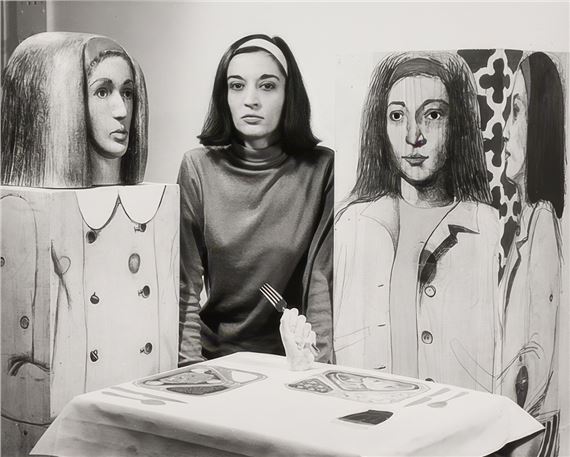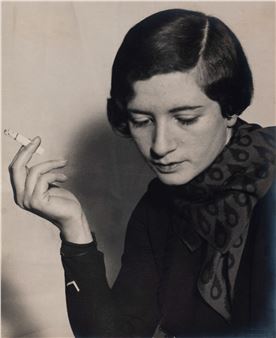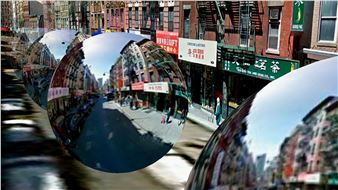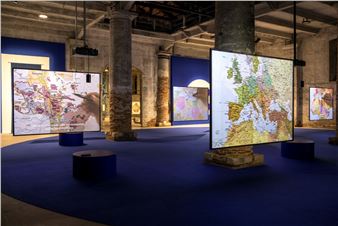Marisol
She was one of the most celebrated and visionary figures of Pop Art, but disappeared almost overnight only to be written out of history. However, Venezuelan-American Marisol (1930-2016) is now experiencing a veritable comeback. Louisiana presents the first major exhibition in Europe of this forgotten, enigmatic and radical artist.
Marisol (1930-2016) stands as one of the most radical and visionary artists of her generation. She was born Mar├нa Sol Escobar in Paris to a Venezuelan family, and died in New York, where she had lived and worked for large parts of her life since the 1950s.
Despite her enormous fame, especially in the United States, and although her work is imbued with an original, artistic vision, there has not yet been a comprehensive showing of Marisol in Europe. Louisiana is therefore proud to be able to present this exhibition.
Marisol had her breakthrough on the international art scene in the early 1960s. During these years, she was close friends with Andy Warhol, who, especially at the start of his career, was both interested in and inspired by her achievements.
Marisol pursued a very personal and distinct path within Pop Art with her painted and carved wooden sculptures of almost human size figures. Often they were assembled with found objects in larger tableaus, where she mixes Pop Art with folk art. One finds references both to early cultures in Central and South America, but also to the booming American consumerism of the 1960s and rise in the cult of celebrity. Her own self-portrait often serving as a focal point.
MarisolтАЩs universe is at once disturbing and colourful, dark and humorous and covers virtually every aspect of daily life. Her complex works are full of existential questions and political messages with strong attitudes towards fixed (gender) roles and equality.
In the 1960s, Marisol without question ranks as one of the most famous and celebrated artists of the decade тАУ her works appear, among other things, several times on the cover of TIME Magazine. However, she chooses to turn her back on New York and take a break from the art world. Although she returns after a couple of years and continues to work in changing genres until her death, she never manages to тАЬrecaptureтАЭ the spotlight.
Marisol is quickly forgotten and her role subsequently written out of the history of Pop Art. It is only now, with a series of recent exhibitions in the US тАУ some of which juxtapose her work with WarholтАЩs тАУ that she is literaly experiencing a comeback. Sparking a major interest and pronounced reappraisal of her influential role and unique body of work.

Recommended for you
She was one of the most celebrated and visionary figures of Pop Art, but disappeared almost overnight only to be written out of history. However, Venezuelan-American Marisol (1930-2016) is now experiencing a veritable comeback. Louisiana presents the first major exhibition in Europe of this forgotten, enigmatic and radical artist.
Marisol (1930-2016) stands as one of the most radical and visionary artists of her generation. She was born Mar├нa Sol Escobar in Paris to a Venezuelan family, and died in New York, where she had lived and worked for large parts of her life since the 1950s.
Despite her enormous fame, especially in the United States, and although her work is imbued with an original, artistic vision, there has not yet been a comprehensive showing of Marisol in Europe. Louisiana is therefore proud to be able to present this exhibition.
Marisol had her breakthrough on the international art scene in the early 1960s. During these years, she was close friends with Andy Warhol, who, especially at the start of his career, was both interested in and inspired by her achievements.
Marisol pursued a very personal and distinct path within Pop Art with her painted and carved wooden sculptures of almost human size figures. Often they were assembled with found objects in larger tableaus, where she mixes Pop Art with folk art. One finds references both to early cultures in Central and South America, but also to the booming American consumerism of the 1960s and rise in the cult of celebrity. Her own self-portrait often serving as a focal point.
MarisolтАЩs universe is at once disturbing and colourful, dark and humorous and covers virtually every aspect of daily life. Her complex works are full of existential questions and political messages with strong attitudes towards fixed (gender) roles and equality.
In the 1960s, Marisol without question ranks as one of the most famous and celebrated artists of the decade тАУ her works appear, among other things, several times on the cover of TIME Magazine. However, she chooses to turn her back on New York and take a break from the art world. Although she returns after a couple of years and continues to work in changing genres until her death, she never manages to тАЬrecaptureтАЭ the spotlight.
Marisol is quickly forgotten and her role subsequently written out of the history of Pop Art. It is only now, with a series of recent exhibitions in the US тАУ some of which juxtapose her work with WarholтАЩs тАУ that she is literaly experiencing a comeback. Sparking a major interest and pronounced reappraisal of her influential role and unique body of work.
Artists on show
Contact details

Related articles
From the vibrant streets of Paris to the serene galleries of Denmark. With both established and emerging international talents.
The story behind one of the most eccentric and peculiar portraits of the Royals ever commissioned.
Louisiana Museum of Modern Art in Denmark is presenting 100 works by the artist Marisol in the first comprehensive survey of her work in Europe.
As the autumn season unfolds, EuropeтАЩs museums and galleries host an exceptional array of exhibitions, spanning from intimate projects to major institutional retrospectives.

 ARTISTS
ARTISTS















